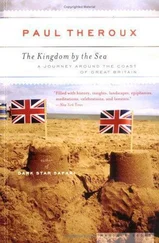The Secret History of the South Sea Bubbleand the First Great Financial Scandal

Karen, Mischa and Katya
Cover
Title Page
Dedication
Prologue
| I |
The Dome |
| II |
A National Lottery, and a Rake’s Progress |
| III |
Blunt Advice |
| IV |
Walpole and the Maypole |
| V |
Who Wants to Be a Millionaire? |
| VI |
The New Economy |
| VII |
Greed Is Good |
| VIII |
Paper Fortunes |
| IX |
Bonfire of the Vanities |
| X |
Time and Tide and a Fall from Grace |
| XI |
Not a Penny Stirring |
| XII |
A Lasting Foundation |
| XIII |
In the Darkness of the Night |
| XIV |
Hall of Mirrors |
| XV |
Friends in High Places |
| XVI |
Doubtful and Desperate Debts |
| XVII |
The Architecture of Eternity |
Postscript
Bibliography
Index
Acknowledgements
About the Author
Author’s Note
Copyright
About the Publisher
Even the Royal Family has joined the ranks of the dot-com investors hoping to make a fortune from Internet shares. Now it has emerged that the Queen has invested £100,000 in the Internet company getmapping.com. When it floats on the stock market next month, it’s expected to be valued at £40 million, so the Queen’s stake will be worth £1.2 million. But there’s growing concern about how successful investments in such stocks will be. An increasing number of City experts believe the Internet bubble will soon burst. Indeed many are comparing it with the first time a shares bubble fuelled by frenzied speculators burst.
Daily Mail , 20 March 2000
It could be fair to describe what happened at the turn of the millennium as the Great Silicon Valley Swindle, a popular delusion that will take its place in economics textbooks alongside the Dutch Tulip Mania of the seventeenth century and the South Sea Bubble of the eighteenth. Investors appeared convinced that venture capitalists were capable of generating extraordinary returns on technology and consumer Internet companies. The effect was to drive up prices to ridiculous levels for companies that scarcely had business plans, let alone revenues or profits. The scale of subsequent value destruction is colossal. Most of the money that was invested in those twenty-four months is likely to be lost. When apportioning blame, it would be tempting to single out the venture capitalists. They, after all, are the ones who invested the money in business plans for ideas as ridiculous as online dog food.Financial Times , 20 August 2001
London, 1710.
The city is reaching for the heavens.
More than fifty steeples point towards the sky, raised arms above the dark, narrow streets whose dwellings are so low they appear to be at prayer. From the Thames-side terrace at Somerset House, there is a breath-taking sight – the architectural clutter of later centuries is not yet upon us. Lead and stone, cupolas and towers, crosses and columns stand exuberant against the sky. There is, perhaps, a gentle breeze, carrying with it the smell of sea-coal from the north of England which the bargemen are unloading on the river.
Downriver lie the two domes of Greenwich Hospital, identical twins along the water’s edge, each with a supporting army of columns. To the east, in Cheapside, more than two hundred and twenty feet up, a bronze weathervane in the form of a dragon swings gently in the wind. Below it stands the pencil-slim elegance of St Mary-le-Bow. As the church rises beyond its square tower it narrows sharply: a temple of simple columns yields to a balustrade, above which, tapering together like fingers, a dozen stone bows are gathered. The church soars skyward, ever slimmer, until the steeple touches the dragon’s feet. For the elegance of its buildings, and above all for this, the most beautiful of his creations, the city gives thanks to the genius of Christopher Wren, whose brilliance has led him down a path of magnificent architectural variety in the rebuilding programme he has inspired since the Great Fire. He is a mathematician first and foremost, but over the years he has trained himself as an architect, absorbing style and simplicity from France, Italy and Holland, but showing a uniform adherence to the influence of no one but himself.
No sooner has he completed St Bride’s in Fleet Street with an octagonal stairway, four steps high, than he tops Christ Church in Newgate with a square one; to St Magnus Martyr he gives an octagonal tower, and to St Vedast in Foster Lane a concave crown; most dramatically, he allows St Martin to rise above Ludgate with an octagonal tower topped by the longest, slimmest steeple of them all: a black lance to pierce the sky.
But its sharpness on the eye is blunted by the great grey shield of St Paul’s Cathedral which curves towards the clouds. As yet unfinished, its incompleteness serves only to emphasise human frailty and humility which its eventual perfection will deny, sealing off the worshippers, separating them from direct contact with God. The church roof is open to the elements and inside workmen are still perched on scaffolding in the chancel, making mouldings above the vaulting. In a large hut, sculptors are at work on statues which will stand in the space before the church – Queen Anne in white marble on a black pedestal, and round her the kingdoms of her domain. Sir Christopher himself can be seen, clambering into a basket to be hauled skywards to inspect the progress of this monument to his brilliance, an ascent he makes three or four times a week. It is his lifetime’s work. From start to finish, he has overseen his cathedral’s rise from the ashes of the city.
The dome to which he is travelling has an inner and an outer part, constructed like two layers of an onion skin so that if Wren was somehow able to peel away the outer covering, a cupola would still remain, resting on eight piers whose arches form the Whispering Gallery where the dropping of the lightest coin of the realm can be heard more than a hundred feet away. And it might be appropriate on this day, as Big Tom strikes the hour in the cathedral tower, if a coin was dropped in this temple, if the outer skin of the roof was peeled away, to reveal the true object of England’s worship. Not St Paul, carved above the central pediment and the great oak doors, nor God himself, but money.
For below Wren’s feet, among the busy maze of streets where some of the capital’s thousand hackney carriages and chairs jolt past, the early signs of financial madness can be detected. This is the kingdom of the ‘moneyed-men’, the stockjobbers who buy and sell their shares in the coffee houses, which are the heart of London’s new financial district, where not just coffee but tea, chocolate, sherbert, sherry and pale ale are consumed and where news spreads as quickly as the Great Fire itself.
Coffee houses are the most popular public places in London: there are more than two thousand of them, the preserve of men who wish to while away the hours free of the opposite sex. Inside, there are long tables and benches, a roaring fire in the hearth, lines of clay pipes and newspapers spread out to read. There is a warm, secure fug of smoke, and drink, and chatter. It is a male club, where the species can protect its own and ignore the world outside, especially the despairing women who once campaigned ‘against coffee and The Grand Inconveniences to their Sex from the Excessive Use of that enfeebling Liquor’.
Читать дальше













